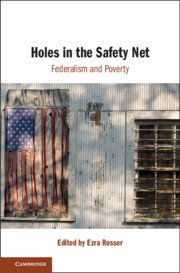New Article: Khiara M. Bridges, Race in the Roberts Court, 136 Harv. L. Rev. 23 (2022). Abstract below:
When it comes to people of color, the Roberts Court treats “racism” as if it is an objective fact — out there in the world, apparent to anyone who stumbles upon it. The Roberts Court invites observers to believe that it is just using simple common sense when it identifies, or refuses to identify, something as racism.
The crux of the Roberts Court’s apparent racial common sense is that racism against people of color is what racism looked like during the pre–Civil Rights Era — in the bad old days. The ways in which white people protected white supremacy back then, and the forms that white supremacy took . . . that is racism. So racism is eugenics. Racism is genocide. Racism is racists disarming formerly enslaved black people to render them helpless and easily killed. Racism is a bigoted prosecutor trying to convict an innocent black man of murder. Racism is the wholesale exclusion, by law or practice, of black citizens from jury rolls. Racism is deeply held views about nonwhite people’s “natural” violent tendencies. Racism is self-described white supremacists cleverly designing nonunanimous jury rules that silence the voices, and nullify the votes, of black people. Racism is Japanese internment camps. Racism is literacy tests and poll taxes and certificates of good moral standing as qualifications to vote. When confronted with a claim of racial discrimination, the Roberts Court appears to be simply determining whether the alleged discrimination resembles what the country did in the pre–Civil Rights Era. If the Court sees a resemblance between the present-day harm and the racism of yesteryear, the Court provides relief. If it sees no resemblance, it provides no relief.
This Foreword intervenes to observe that the Roberts Court’s impoverished conceptualization of what “counts” as racism against people of color is a strategy that the Court deploys to accomplish regressive ends. It permits the Court to do nothing to destabilize and disestablish the country’s existing racial hierarchy. Essentially, the Court provides a remedy to people of color seeking relief from racially burdensome laws and policies only when the racism embedded in the challenged law or policy is so closely tied to white supremacy that it would be embarrassing for the Court to do nothing. The Roberts Court’s racial common sense is a tactic that allows the Court to do no more than the absolute bare minimum and, in so doing, maintain a modicum of legitimacy.





